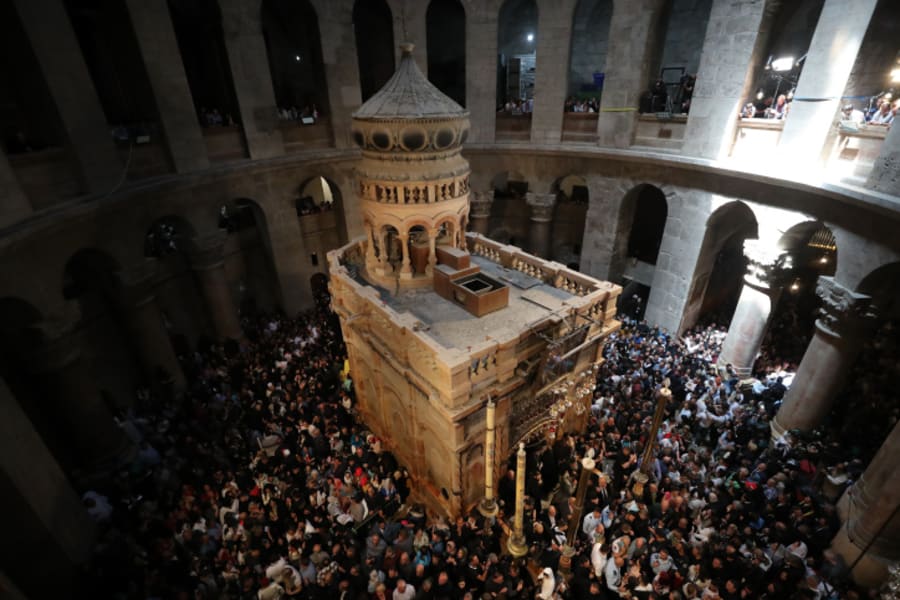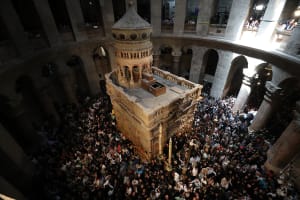Church of the Holy Sepulchre reveals historical treasures in 7 days and 7 nights of excavations
The excavations were conducted right in front of the site of the empty tomb

A number of historical artifacts found in recent excavations in the Church of the Holy Sepulchre in Jerusalem shed new light on the history of the church commemorating the places where Jesus died and rose from the dead.
The excavations are part of an ongoing program to restore the basilica floor and were conducted right in front of the Aedicule, the building directly over the site of the empty tomb.
The archaeological investigations were carried out by the Department of Antiquities of Sapienza University of Rome, under the direction of Prof. Francesca Romana Stasolla, according to a communique issued by the Custody of the Holy Land on July 7.
The Custody belongs to the Franciscan Order, whose members are tasked with caring for Catholic sites in Israel.
Because the Aedicule, a small shrine, had to be closed during the excavation work, it was conducted in a continuous cycle during the span of seven days and seven nights.
Among the most exciting discoveries during these excavations was a hoard of coins, the latest of which carried the image of Roman Emperor Valens and dated to 364-378 A.D.
The coins were found under a floor made of large smooth stone slabs, which in the fourth century AD were part of the earliest rotunda built over the tomb.
The archaeologists also found remains of the balustrade of the 16th-century liturgical enclosure which remained in use until the 19th-century renovations.
Another fascinating artifact is a fragment of wall cladding that likely was part of the Aedicule in the 18th century, and is covered with graffiti written by pilgrims in various languages, including Greek, Latin and Armenian.
Inside the tomb, the remains of the medieval marble floor were found, as well as traces of intense frequentation on the rock of the tomb itself, which made it extremely smooth.
In earlier excavations carried out in June, archaeologists found two bricks stamped with the symbol of the Legio X Fretensis, the Roman legion that was stationed in the Holy Land.
In addition, remains of a Roman road with an east-west orientation were found, which was cut during the construction of the early Christian structures.
Construction of the Church of the Holy Sepulchre began in the 4th century and originally consisted of two structures: The rotunda above the place where Jesus was buried and later rose from the dead and a basilica to the east, containing the hill of Golgatha, where Jesus was crucified.
The location of the tomb was determined by Helena, mother of the first Christian Roman emperor Constantine, who, according to legend, miraculously found the tomb and the cross of Jesus during a pilgrimage to the Holy Land.
Even though it is well within the confines of today's Old City, the location of the Church of the Holy Sepulchre was outside the walls of the Roman city, fitting the New Testament description.

The All Israel News Staff is a team of journalists in Israel.
You might also like to read this:
















